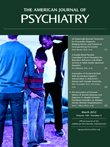Researching the Autism Spectrum: Contemporary Perspectives
This book presents an intriguing multidisciplinary anthology of research in autism spectrum disorders, highlighting the works of investigators from the United Kingdom. Originating from a series of conferences and from think tanks concerning the priorities and directions of autism research in the United Kingdom, this collection of 12 perspectives covers a vast amount of scientific ground in a readable fashion.
Organized somewhat loosely into three sections, the content seems to unfold like a mosaic, as opposed to progressing in a linear fashion. The chapters are authored by highly accomplished scientists who eloquently synthesize research in their particular area, using clearly defined terms and providing illustrations of complex ideas. Some chapters are focused broadly and provide succinct and insightful overviews of current work in topics such as genetics, neuroimaging, biochemistry, cognition, and language. In my opinion, these reviews are well organized, clear, and concise. In fact, one of the unique strengths of this volume is its accessibility for informed, but not necessarily expert, readers. For example, the chapter on genetics by Sousa and colleagues integrates an elegant primer on genetic tools and approaches without condescending to or overwhelming the nonexpert reader. The chapter on neuroimaging by Spencer and colleagues also provides a brief review of current technologies while summarizing the outcomes attained thus far within each approach. Informative and interesting tables and figures are presented throughout the book, encouraging some active synthesis for the interested reader.
Other chapters are specifically focused, highlighting areas of inquiry that the editors view as underrepresented in the published literature and as theoretically important for future study. Topics in these chapters include Gillberg and Neville's discussion of autism and epilepsy and a conceptually rich piece on memory in autism by Bowler, Gaig, and Lind. Among the more theoretical chapters in the book, Hobson and Hobson describe how core deficits in self-other awareness could affect cognitive flexibility over time, thus presenting a novel hypothesis for the co-occurrence of social reciprocity and executive function problems in many persons with variants of autism spectrum disorder. Although the coverage of topics can seem uneven at times and the change in scope from the macro- to the microlevel of analysis can be somewhat jolting from chapter to chapter, the overall picture that is created from this collection of perspectives reflects the current state of the field as a multilevel, multidisciplinary, highly complex endeavor.
If approached as an anthology or a collection of works that more or less exist independently, this volume is consistently interesting and illuminating. It provides a helpful update for experienced professionals as well as a good starting point for scientists just entering the field. It is not a book I would recommend to most parents. However, I can certainly see some chapters as being interesting to scientifically minded parents who are curious about etiology. Similarly, some chapters would be excellent additions to the syllabi for graduate courses in developmental psychopathology, clinical research methods, or interdisciplinary science.
If a reader is expecting a broad-based comprehensive compendium of science in autism, then this particular book may not satisfy all expectations. For example, cognitive and information processing models are presented in greater depth than developmental and behavioral models. Applied research, intervention science, and inquiries into education, policy, and epidemiology are not covered extensively. Although the editors mention the importance of studying comorbidity and taking a longitudinal approach to studying autism, these two themes are not well integrated into the present volume. Then again, no one book can cover every angle on such a complex disorder, and the synthesis presented in this particular volume is innovative and reflective of current international priorities in autism research. Most appropriate for researchers, especially those engaged in multidisciplinary science, this collection has much to offer those seeking scientifically robust reviews of the current state of several kinds of autism research.



